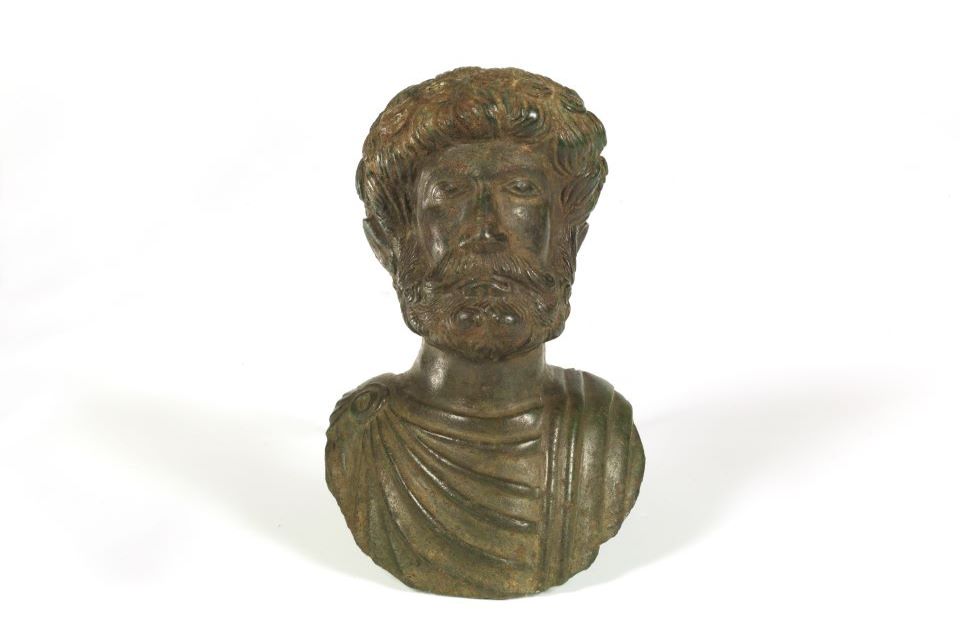Record details
| Bust of Lucius Verus | |

|
|
|
It is likely that the small, bronze bust found at Duston represents the Roman emperor Lucius Verus who ruled between 161 – 169 CE. Perhaps made in Gaul, which is now France, the style shows a combination of classical and Celtic influences. |
|
| 161 – 169 CE | |
| Bronze metal | |
| Duston | |
|
It is likely that the small, bronze bust found at Duston represents the Roman emperor Lucius Verus (161 – 169 AD). Perhaps made in Gaul (France), the style shows a combination of classical and Celtic influences. Northampton was occupied by the Romans from 43AD, when the empire invaded the country. Soon a small market town at Duston, farm sites in the Thorplands and Wollaston areas, a villa in Wootton, and fortified towns in the Towcester, Irchester and Peterborough areas were all established. There was also a Roman walled town including evidence of two temples, roads, cemeteries and a causeway at Chester Farm, Irchester. During the early Romano British Period, we also have evidence for iron stone quarrying at Roman sites across Northamptonshire as the rock was exploited for smelting. Further sites across the county can be found at Brixworth, Handley, Towcester, Piddington and Stanwick. Watling Street was built near the area of Towcester for ease of communication and the county at this time grew and prospered. The settlement at Duston in particular flourished during this period. Coins and trade objects found at the site suggest that an important local market was situated in Duston. |
|
| Romano-British Duston Cases, History of Northampton Gallery 1 |
